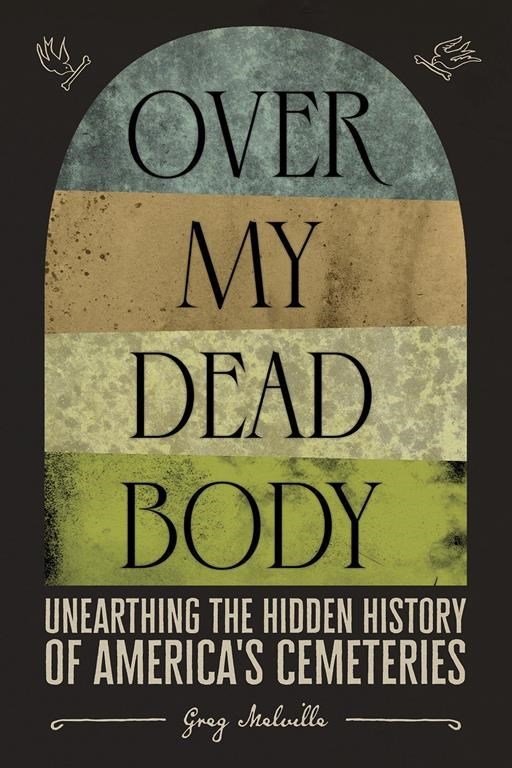Over My Dead Body: Unearthing the Hidden History of America’s Cemeteries,” by Greg Melville (Abrams Press)
It turns out that America’s graveyards are much more than keepers of our bodily remains until the organisms within the soil reclaim everything. Cemeteries tell us about our beliefs, principles, economics and cultural values, says Greg Melville in this fascinating examination of how we treat, and mistreat, our dead.
Given the topic, Melville moves briskly and with a keen eye for connections, trends and the absurd.
He notes, for example that post World War II layouts of suburbs were inspired by the simplicity of design that began decades earlier in cemeteries.
Cemeteries can be much more than collections of burial plots. Green-Wood cemetery in Brooklyn, New York, is famed for its sculptures and the art, artifacts and books also housed at the site, which also hosts exhibits and concerts.
America’s favorite place to scatter cremains? It may be Central Park in New York although the high concentration of calcium in cremains makes it advisable to spread them out widely.
Descendants of the Seneca Indians who lived in the area where Central Park was built had no chance to scatter their relatives’ cremains — the park was built over the village’s graveyards.
Dying is big business in America; Melville writes that the “death industrial complex” generates $20 billion in annual sales.
The book peeks over the horizon at what’s ahead in the dying business, given how many urban cemeteries are full or nearly so, and having trouble maintaining themselves because they lack new income.
The book says the 144,000 cemeteries in the United States collectively take up more room than the entire state of Delaware.
New burial grounds in Philadelphia and Marin County, California, wrap bodies in cloth and bury them without preserving chemicals, metal caskets or concrete burial vaults.
The book’s most powerful sections are those explaining the lengths whites often went to so no Black people would be buried nearby. We shunned early Chinese immigrants also when they died despite their roles in building the transcontinental railroad and western cities. We looted Indian graves and built on top of Indian burial grounds.
Not even in death could Blacks escape segregation. Melville’s book documents how in many states, cemeteries were segregated and remain that way.
In 2021, he writes, the family of a Black deputy sheriff in Louisiana was barred from burying him in a local cemetery because it “enforced an illegal whites-only policy.”
As Melville explains, the Black cemeteries generally remain visibly interior to those established by and for whites. Still, spending forever in an unkempt graveyard remains outwardly better than the fate of the 6 million enslaved in America from when the first ships with human cargo arrived until emancipation. Melville says we only know where “a fraction” of the 6 million are buried.
While the federal government funds maintenance on Confederate soldier burial sites, it allocates no funds for “restore of preserve historically Black cemeteries.” Maryland’s legislature has discussed funding historically Black cemeteries but hasn’t yet taken any action.
Melville has researched, reported and written a powerful book that not only summons us to embrace equitable treatment of all Americans in death but also in life. It’s up to us to remedy the injustices of the past in America’s burial grounds because as Melville reminds us, the “the dead have no voice.”
Jeff Rowe, The Associated Press



